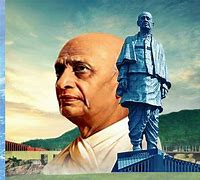
Phone : -
Start Date : -
End Date : -
Start Time : -
End Time : -
Sardar Vallabhbhai Patel, often referred to as the "Iron Man of India," played a crucial role in India's struggle for independence and its integration into a unified nation post-independence. Born on October 31, 1875, in Nadiad, Gujarat, Patel was a prominent leader and a key figure in the Indian National Movement.
Patel was born into a relatively modest family and showed early signs of leadership and commitment. He initially studied in his hometown and later went to London to study law. After passing the bar exam in 1913, he returned to India and began practicing law in Ahmedabad.
Patel's involvement in politics began with his participation in local issues in Gujarat. He was deeply influenced by the nationalist movement and the leadership of Mahatma Gandhi. His early activism included addressing local grievances and working to improve conditions for farmers.
Patel's contribution to the Indian independence movement was significant and multifaceted:
Kheda and Bardoli Agitations: Patel's leadership in the Kheda (1917) and Bardoli (1928) agitations was pivotal. In these campaigns, he mobilized farmers against oppressive taxation and unjust policies imposed by the British authorities. His effective organization and strategy in Bardoli earned him the title "Sardar," meaning leader or chief.
Non-Cooperation and Civil Disobedience Movements: Patel was an active participant in Gandhi's Non-Cooperation Movement (1920-1922) and the Civil Disobedience Movement (1930-1934). His organizational skills and leadership helped these movements gain significant traction.
One of Patel's most remarkable achievements was his role in integrating over 500 princely states into the Indian Union after independence in 1947. As the first Deputy Prime Minister and Home Minister of independent India, Patel worked tirelessly to persuade the princely states to join the Indian Union. His diplomatic and sometimes forceful tactics ensured a unified India.
Key Steps in Integration:
Negotiations and Persuasion: Patel, along with his aide V.P. Menon, negotiated with the rulers of the princely states, offering them various incentives to join the Indian Union. His pragmatic approach and firm negotiations played a critical role in achieving this goal.
Use of Force: In some cases, such as with the princely state of Hyderabad, Patel's administration used military action (Operation Polo) to integrate the state into India.
Sardar Patel’s vision and leadership were crucial in shaping modern India. His contributions include:
Patel passed away on December 15, 1950, but his legacy endures. He is remembered as a key architect of modern India, and his contributions are honored in various ways, including the construction of the Statue of Unity, the world’s tallest statue, located in Gujarat. Patel’s birthday, October 31, is observed as National Unity Day in India, celebrating his role in promoting national integration and unity.
Sardar Patel's life and work remain a source of inspiration, symbolizing dedication, leadership, and the spirit of unity in the face of challenges.